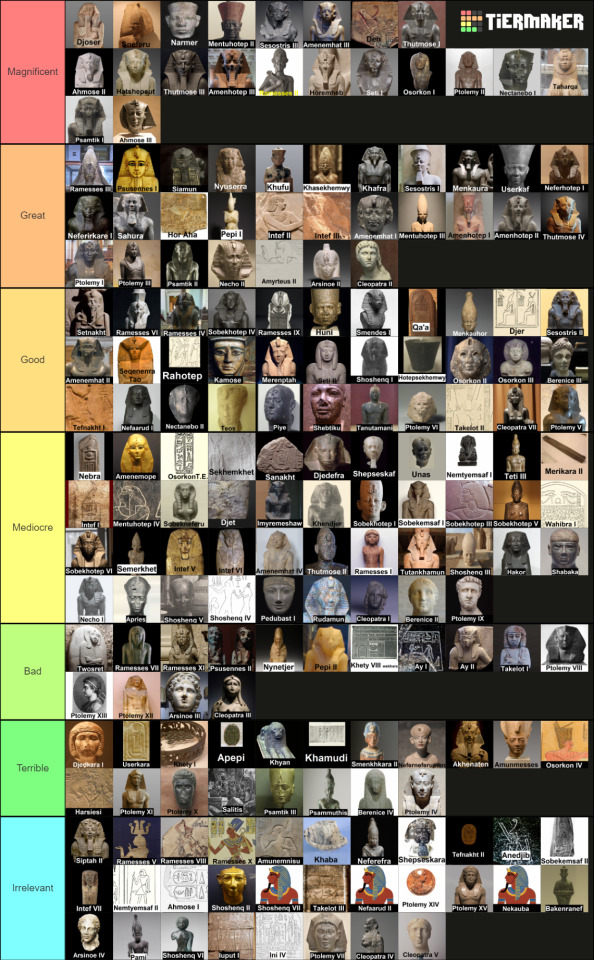The rambling ideas of the lost Pharaoh of Egypt.
Last active 2 hours ago
Don't wanna be here? Send us removal request.
Photo
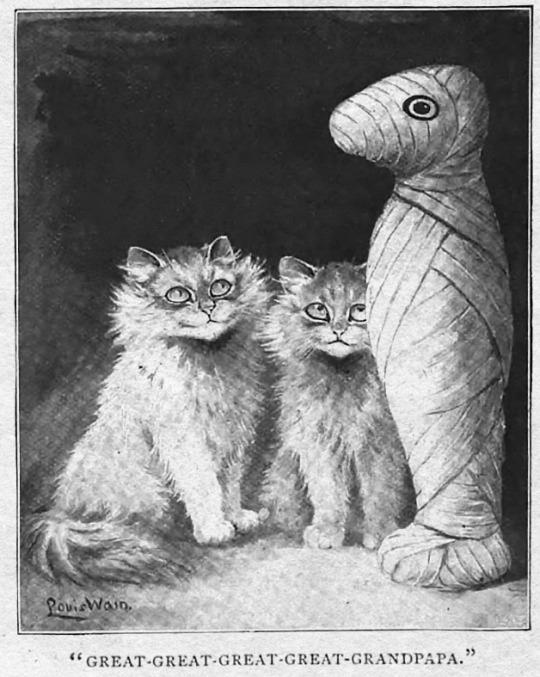
Pick-Me-Up magazine, September 25, 1897
7K notes
·
View notes
Text
Known as “the plant of immortality” by the Ancient Egyptians, and treasured by numerous subsequent cultures, aloe vera it still known today for its many health benefits. For millennia it has been used to treat more than 50 medical conditions, from obesity to burns, dermatitis, ulcers, asthma, diabetes, acne, and even leprosy.
12 notes
·
View notes
Text

3,200-Year-Old Egyptian Tomb of Ramesses III’s Military Commander Uncovered
Egyptian archaeologists have discovered a 3,200-year-old tomb thought to be that of a senior military commander during the time of Pharaoh Ramesses III. The tomb was discovered at the Tell el-Maschuta site, also referred to as Tell el-Maskhuta, in the Ismailia governorate. The discovery illuminates the strategic significance of the area in protecting Egypt’s eastern borders during the New Kingdom period.
Dr. Mohamed Ismail Khaled, Supreme Council of Antiquities Secretary General, underlined the significance of the discovery, noting that the Tell el-Maschuta area was a key military outpost. Existing fortifications and garrisons in the region suggest that it played a crucial role in defending Egypt against external threats.
The tomb, constructed using mud bricks, features a main burial chamber and three other surrounding rooms whose walls are covered with white mortar. Inside, archaeologists discovered a collection of artifacts that indicate the deceased was a high-ranking military official. The most significant items discovered were a gold ring with the cartouche of Ramesses III, bronze arrowheads, and a small ivory box. The artifacts suggest the individual was the pharaoh’s military leader.



One of the most fascinating finds was a set of inscribed pottery vessels with the name of Pharaoh Horemheb, who reigned from around 1323 to 1295 BCE. A former military leader before becoming a pharaoh, Horemheb ruled over a hundred years prior to Ramesses III. The fact that his name appears on the pottery indicates that the tomb could have been reused over time.
Further evidence of the reuse of the tomb came to light through the human remains recovered inside. A skeleton covered in cartonnage—material made up of linen and plaster—refers to the fact that the burial had been altered in later periods. In addition to skeletal remains, archaeologists also recovered alabaster vessels, semi-precious stones, and amulets depicting the gods Taweret and Bes, as well as the Eye of Udjat, a protective symbol in Egyptian mythology.
Beyond the military commander’s tomb, archaeologists also uncovered a series of collective and individual burials dating to the Greco-Roman and Late Periods. These burials contained skeletal remains and funerary artifacts that highlight the region’s rich cultural history as a crossroads between civilizations. Professor Qutb Fawzi Qutb, director of the Lower Egypt and Sinai Antiquities Department, noted that the combination of Egyptian and Greco-Roman elements in the tombs provides valuable insights into the region’s diverse historical influences.



In addition to the tomb of the military commander, archaeologists also unearthed a series of collective and individual burials that dated to both the Greco-Roman and the Late Period. The burials contained skeletal remains and artifacts revealing the region’s rich cultural history as a crossroads between civilizations.
Ramesses III, who ruled from about 1184 to 1153 BCE during Egypt’s 20th Dynasty, is often regarded as the last great pharaoh of ancient Egypt. His reign was marked by military conflicts, most notably his conflicts with the Sea Peoples, a group of seafaring raiders that threatened the stability of Mediterranean civilizations. In the most pivotal battle, the Battle of the Delta in 1175 BCE, the Egyptian navy outmaneuvered the invaders with tactical superiority on the waterways of the Nile.
The recently discovered tomb brings intriguing speculations about the occupant’s role in these wars of antiquity. If this individual buried within was a military commander under Ramesses III, he may have played a crucial role in defending Egypt.
The Egyptian Tourism and Antiquities Ministry stated it would go ahead with more excavations and studies on the site in the hopes that further studies will reveal additional information on Egypt’s military and cultural history.
By Dario Radley.

#3200-year-old egyptian tomb of ramesses iii’s military commander uncovered#tell el-maschuta#tell el-maskhuta#pharaoh ramesses iii#ancient graves#ancient tombs#funeral goods#ancient artifacts#grave goods#archeology
25 notes
·
View notes
Text


Ramesses III and Prince Amenherkhepeshef before Hathor - Met Museum Collection
Note: This is a Twentieth Century Copy Photo Focus: Ramesses III Inventory Number: 33.8.7 Original Dating: New Kingdom, Ramesside, Dynasty 20, ca. 1184–1153 B.C. Location Information: Original from Egypt, Upper Egypt, Thebes, Valley of the Queens, Tomb of Amenherkhepeshef (QV 55), MMA graphic expedition 1933
Description:
This facsimile copies a scene in the tomb of Prince Amenherkhepeshef in the Valley of the Queens. It shows the prince following his father, Ramesses III, who is led by the goddess Hathor. Amenherkhepeshef wears a sidelock of hair, symbolic of youth. The king wears an elaborate garment with a feather pattern and long sashes.
#ramesses iii and prince amenherkhepeshef before hathor#met museum#ramesses iii#upper egypt#thebes#valley of the queens#tomb of amenherkhepeshef#new kingdom#ramesside#dynasty 20
19 notes
·
View notes
Text
An extraordinary find.
15 notes
·
View notes
Text
Rameses III
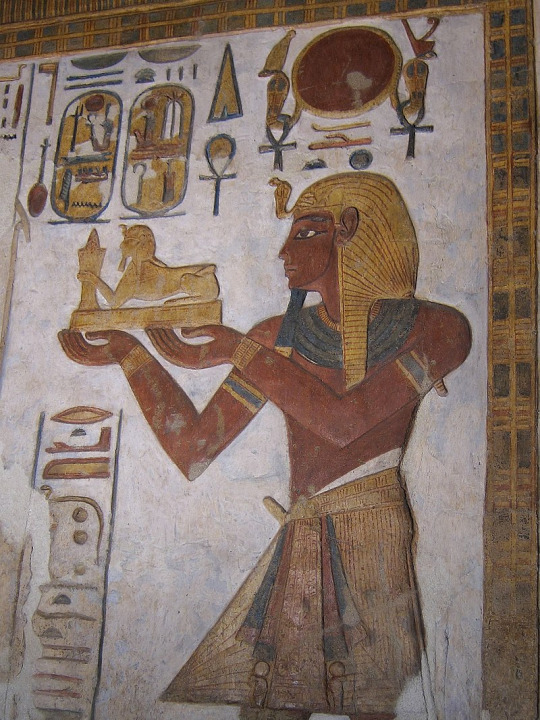
By Asavaa - Own work, CC BY-SA 3.0, https://commons.wikimedia.org/w/index.php?curid=10233973
Usermaatre Meryamun Ramesses III was Pharaoh from 26 March 1186-15 April 1155 BCE, the second pharaoh of the Twentieth Dynasty, the last pharaoh of the New Kingdom considered to have substantial power. During his reign, the decline of Ancient Egypt's political and economic power that began with those before him slowed. He was able to defeat the Sea Peoples, saving Egypt from completely collapsing like other empires during the Late Bronze Age collapse.

By A. Parrot - Own work, CC0, https://commons.wikimedia.org/w/index.php?curid=46239309
His reign was marked with political chaos from the collapse and constant war to protect Egypt from invaders pushed by the chaos as well as internal political chaos. Part of the internal chaos was due to the cost of protecting the borders of Egypt slowly exhausting the treasury. This led to food rations to the elite royal tomb-builders being missed after a series of poor harvests, likely caused by the Hekla 3 eruptions in about 1160 BCE, for nearly two decades, until about 1140 BCE. This resulted in higher grain prices.

By Transferred from fr.wikipedia. Original uploader was Aoineko., Public Domain, https://commons.wikimedia.org/w/index.php?curid=8162606
His death came through assassination. He was killed by the Harem conspiracy, a coup d'état where a minor wife, Tiye, wanted her son, Pentawer, to take the throne instead of Ramesses III's designated heir, Ramesses IV. She was able to recruit several officials and servants to deliver her letters, making it a two-fold conspiracy between the harem and officials. The harem was very restricted, so the overseer and clerk of the harem had to be brought in to reach beyond the harem. Ramesses III's throat was cut to the bone, resulting in a quick death.

By Unknown author - Nicholas Reeves, Richard H. Wilkinson: Das Tal der Könige. Geheimnisvolles Totenreich der Pharaonen. S. 160,
In the trials held afterward by Ramesses IV, 38 people were sentenced to death, either through being put to death by the state or by suicide. During the trial, some of those from the harem tried to seduce judges, but they were caught and the judges involved were severely punished. Tiye and Pentawer's tombs were emptied of any treasure and their names were stricken from everything but the judicial record of the trial, denying them an afterlife.
20 notes
·
View notes
Text

Mortuary Temple of Ramesses III, Medinet Habu.
749 notes
·
View notes
Text
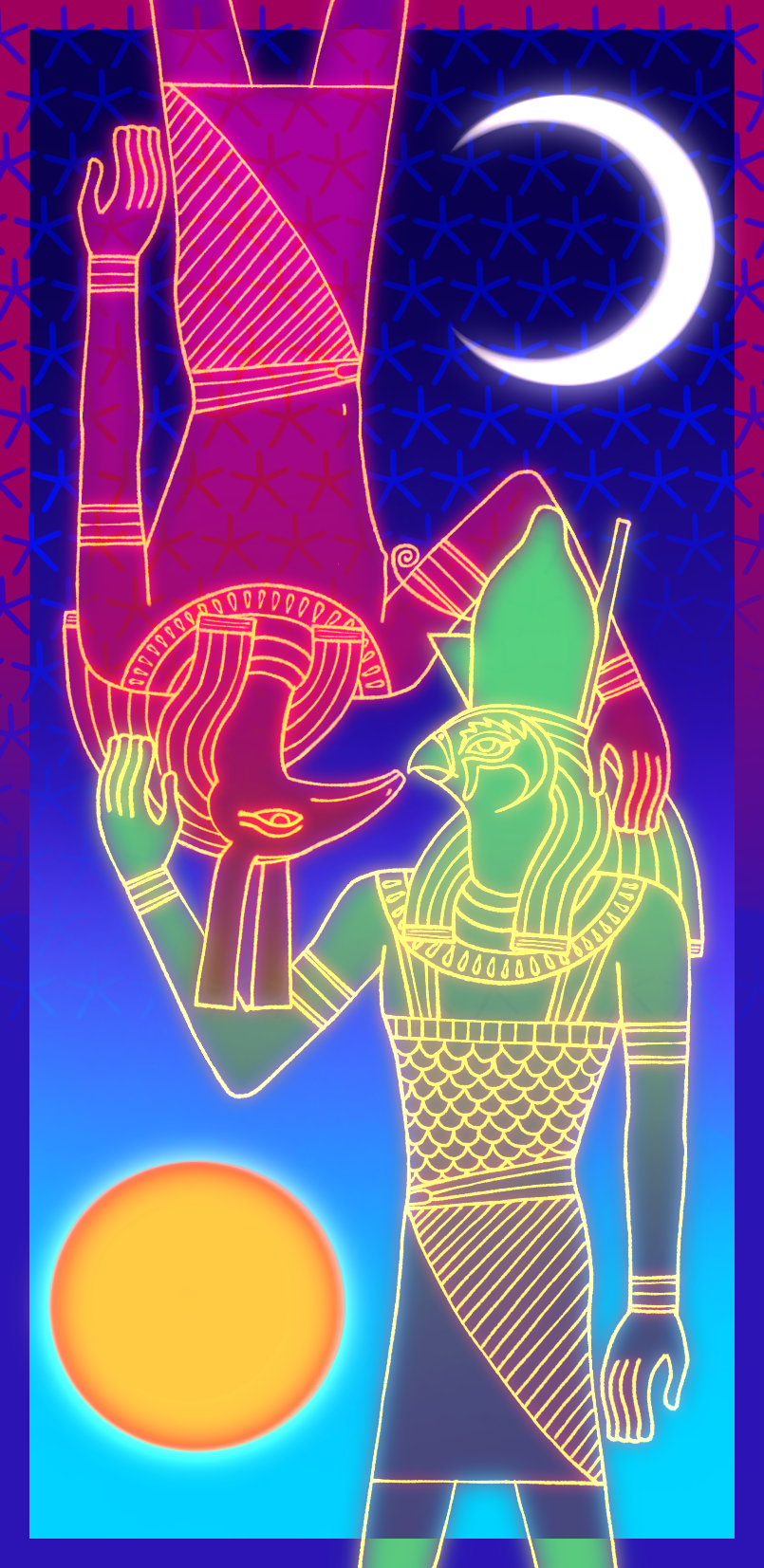
What if we kissed 😳 And were both cosmic opposites locked in an eternal power struggle 🥺❤️
212 notes
·
View notes
Text
Ramesses II and Nefertari

Ramesses II (also Ramses or Ramesse) was the third pharaoh of the 19th dynasty, son of Seti I and his Great Royal Spouse Tuya. He is considered one of the greater, if not the greatest, of the Kings of Egypt, so much so that he deserved the name Ramesses the Great. He brought Egypt to its peak after the decadence that followed the death of Akhenaten, signed a historic peace treaty with his historic enemies, the Hittites, created a new capital, Pi-Ramesses, and built more monuments than any other pharaoh in history, including the famous Abu Simbel. He had, at least formally, 200 consorts, but his great love was Nefertari. He died at over 90 years old.
Nefertari was the first of Ramesses' Great Royal Spouses. Extremely educated, her diplomatic skills and her correspondence with the Hittite empress Putuheba were instrumental in establishing peace between the two nations. Much loved by her husband, who celebrated their love by dedicating the twin temples of Abu Simbel to her. According to tradition, Nefertari died just at Abu Simbel, shortly after having witnessed the completion of the temple dedicated to her, when she was around forty. She was buried in the Valley of the Queens, in a sumptuous tomb that is considered the most beautiful and best preserved in the necropolis. Her importance is here underlined by the wall paintings, where she is, exceptionally, depicted at the same size as her husband. She bore her husband several sons, but they all died before their father, thus failing to succeed him to the throne.
#history#history of ancient egypt#ancient egypt#ramesses ii#nefertari#queen nefertari#aesthetic#history aesthetic#historical ship#historical romance
14 notes
·
View notes
Text

Queen Nefertari Kneeling in Adoration, Tomb of Nefertari - Met Museum Collection
Note: This is a modern copy of an original Inventory Number: 30.4.144 Original Dating: New Kingdom, Ramesside, Dynasty 19, ca. 1279–1213 B.C. Location Information: Original from Egypt, Upper Egypt, Thebes, Valley of the Queens (Biban el-Malikat), Tomb of Nefertari (QV 66)
#queen nefertari kneeling in adoration#tomb of nefertari#nefertari#new kingdom#ramesside#dynasty 19#upper egypt#thebes#valley of the queens#met museum
31 notes
·
View notes
Text

Imhotep haunting the grounds of Abu Simbel.
40 notes
·
View notes
Text

The Goddess Ma'at hovers over the entrance of the burial chamber of Nefertari.
Tomb of Nefertari (QV66), Valley of the Queens, Thebes.
2K notes
·
View notes
Photo

A picture during the beginning of the construction of the Egyptian Museum in Tahrir Square in 1901 AD
صورة أثناء بداية بناء المتحف المصري بميدان التحرير عام ١٩٠١م
source https://m.facebook.com/story.php?story_fbid=pfbid026mWdvmeKtoCyWj5nNzEnPWMHyuqDU3WTbUYa1MsTxnQnU18KCeyLtdurLAUpptbYl&id=100022132082933&mibextid=Nif5oz
#platedaccessories #silver925 #necklace #earrings #bracelets #bangles #online_shopping #jewellery #jewels #jewel #shopping #fashion #trendy #accessories #beautiful #style #fashionista #accessory #stylish #fashionjewelry
https://www.instagram.com/p/CpZYmu5NQ8R/?igshid=NGJjMDIxMWI=
15 notes
·
View notes
Photo

Seal Rings! Most of the rings I saw had a “Khepri”, which was a scarab representing a rising Sun god. It was sign of fertility and rebirth for Egyptians, and that belief comes from the fact that the scarab beetle pushes through the desert an excrement ball where it previously deposited its eggs, until a point where newly born scarabs start to come out! Watching that event must be intriguing, new life coming from “nothing” - self creation! Because of this, they associated it with the daily self rebirth of the Sun. These rings are named “Seal Rings” because in fact they are stamps! they have a spinning axis, one side of the ring has a sculpted stone/gold/cloissone beetle and the other side a personal insignia for printing in clay. Multipurpose! I love it
Read more 📚
http://gemagenta.blogspot.com/2010/04/ancient-egyptian-jewelry-at-met-museum.html?m=1 (at The Metropolitan Museum of Art, New York) https://www.instagram.com/p/CpvOEAdM78q/?igshid=NGJjMDIxMWI=
20 notes
·
View notes
Photo
An unfinished brown quartzite head of a royal woman believed to be Queen Nefertiti and intended to be part of a composite statue.
Dated to the reign of her husband, King Akhenaten (circa 1353-1336 BCE under the 18th Dynasty), it was excavated in Akhetaten (modern day el-Amarna).
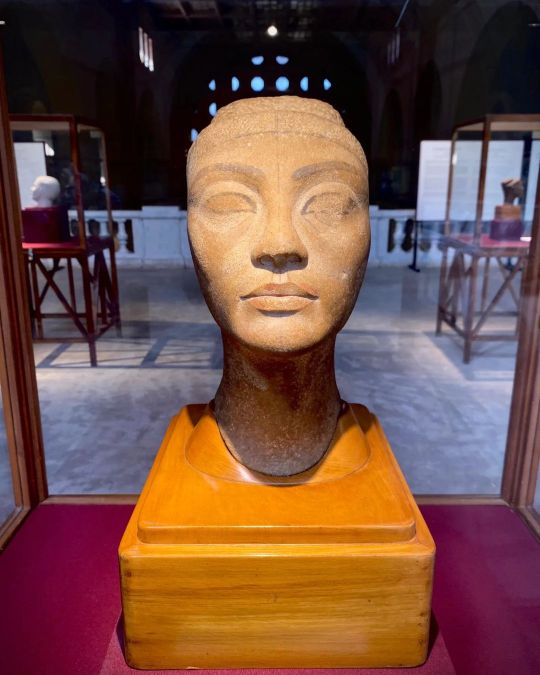
who is this !! 👀 😳 🤔
#platedaccessories #silver925 #necklace #earrings #bracelets #bangles #online_shopping #jewellery #jewels #jewel #shopping #fashion #trendy #accessories #beautiful #style #fashionista #accessory #stylish #fashionjewelry (at Egyptian Museum) https://www.instagram.com/p/Cp7DfflMO2A/?igshid=NGJjMDIxMWI=
9 notes
·
View notes


